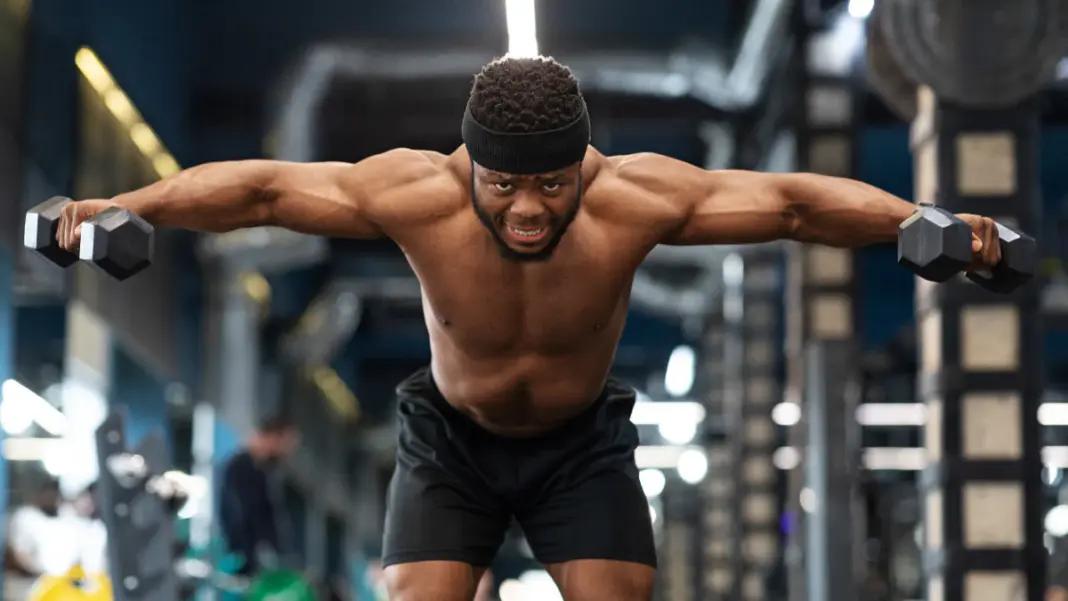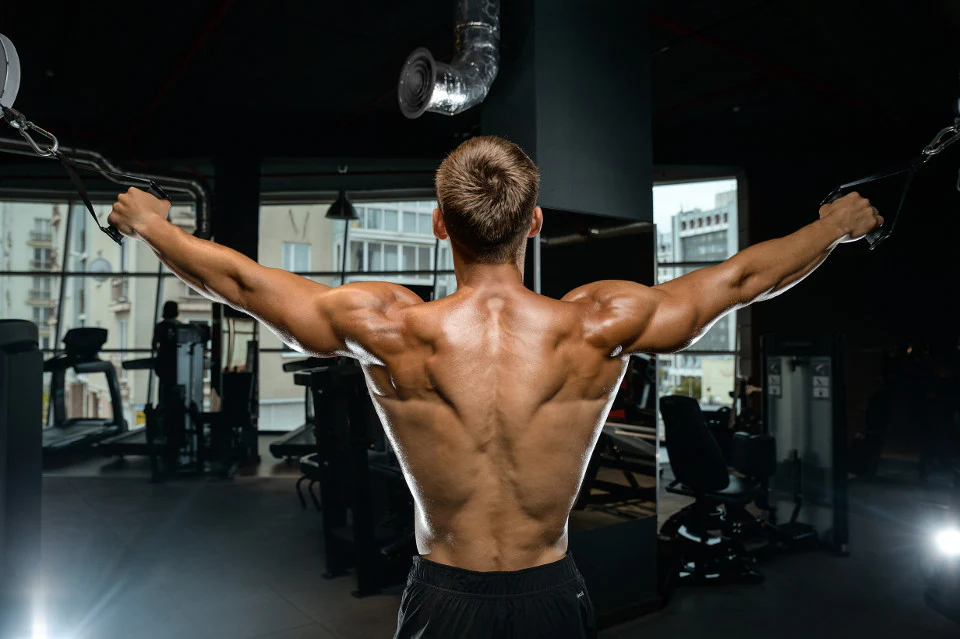Rear Delt Isolation vs Compound Training: Which Builds 3D Shoulders Faster?
When it comes to training shoulders, most lifters either obsess over the side delts for width or overload the front delts with pressing.
The rear delts (posterior deltoids), however, are too often neglected—or misunderstood. Some lifters swear that heavy rows and presses are enough.
Others live on endless sets of reverse flys, chasing a pump but ignoring the bigger picture.
The truth? If you want thick, round, 3D shoulders that pop from every angle, you need both isolation and compound training.
Each serves a distinct role in developing the rear delts, and if you don’t balance the two, you’ll leave growth on the table.
As a bodybuilder who’s fought to bring up lagging rear delts, I’ve seen firsthand what works, what doesn’t, and how smart programming makes the difference.
Let’s break down the anatomy, training strategies, and practical takeaways so you can finally give your rear delts the attention they deserve.
Rear Delts 101: Why They Lag Behind
The rear deltoid sits on the back of your shoulder, connecting the scapula to the humerus. Its main functions are:
- Horizontal abduction – pulling the arm back away from the midline.
- External rotation – rotating the arm outward.
- Shoulder extension – helping drive the arm behind the body.
Despite its importance, the rear delt is one of the most common weak points for bodybuilders. Here’s why it lags:
Front-dominant training bias
Bench press, overhead press, dips, push-ups—you hammer your front delts every week without even trying.
Back bias in pulling movements
Rows and pull-ups are fantastic for the lats and traps, but they don’t place nearly as much tension on the rear delts as people assume.
Out of sight, out of mind
You see your chest, arms, and front delts in the mirror daily. You don’t see your rear delts unless you turn around. Naturally, they get neglected.
That’s why direct rear delt work is non-negotiable if you want balanced, healthy, and aesthetic shoulders.
Isolation Training for Rear Delts
Isolation exercises are movements where the rear delts are the prime mover, with minimal involvement from larger muscles like the lats or traps.
Benefits of Isolation Work
- Direct stimulus → Maximum tension goes to the rear delt fibers.
- Better mind-muscle connection → You can actually feel them working, which is crucial for weak-point training.
- Volume-friendly → Because loads are lighter, you can do more sets and reps without frying your nervous system.
Best Isolation Exercises
- Dumbbell Reverse Fly (Incline Bench)
- Targets the rear delts directly with minimal momentum.
- Keep your chest on the bench, slow the tempo, and lead with your elbows.
- Rear Delt Cable Fly
- Constant tension throughout the movement.
- Great for achieving a pump and improving contraction quality.
- Reverse Pec Deck
- Machine stability means you can safely push closer to failure.
- Excellent for higher-rep hypertrophy work.
- Band Pull-Aparts
- Perfect as a warm-up or burnout finisher.
- High frequency possible due to low joint stress.
Programming Tips for Isolation
- Reps: 12–20+
- Tempo: Controlled, focus on the squeeze.
- Load: Moderate weight that allows strict form.
- Volume: 6–10 total sets per week (depending on need).
Bodybuilder’s Note: Isolation is where you refine detail and density. If your rear delts are visually lagging, this is where you fix it.
Compound Training for Rear Delts
Compound lifts are multi-joint movements where the rear delts assist alongside other muscles (lats, traps, rhomboids).
While they aren’t the main mover, they’re heavily engaged when performed with the right technique.
Benefits of Compound Work
- Heavier loads → Builds strength and mechanical tension.
- Efficiency → Rear delts grow while you train the back.
- Stability and support → Essential for shoulder health, pressing strength, and posture.
Best Compound Movements for Rear Delts
- Face Pulls (with External Rotation)
- A staple for both hypertrophy and rotator cuff health.
- Focus on pulling high to the forehead, rotating out at the top.
- Chest-Supported Rear Delt Row
- Limits lat dominance by keeping elbows flared.
- Hit with moderate weight, strict form.
- Wide-Grip Rows to Upper Chest
- Adjust grip and elbow path to bias the rear delts over lats.
- Think “drive the elbows out and back.”
- Arnold Face Pull-to-Press Hybrid
- Advanced combo movement that nails rear delts and shoulder stabilizers.
Programming Tips for Compounds
- Reps: 6–12
- Tempo: Controlled, avoid jerking the weight.
- Load: Heavier than isolation, but not ego lifting.
- Volume: 6–8 sets per week is plenty.
Bodybuilder’s Note: Compound moves give your rear delts thickness and tie-ins with the traps and upper back. They build the “meat” while isolation adds polish.
Isolation vs Compound: Head-to-Head
| Factor | Isolation | Compound |
| Primary Function | Direct hypertrophy stimulus | Strength & support engagement |
| Load | Light–moderate | Moderate–heavy |
| Rep Range | 12–20+ | 6–12 |
| Volume Tolerance | High | Moderate |
| Best Use | Refining lagging rear delts | Building strength + balance |
Practical Programming: The Hybrid Approach
The smartest strategy isn’t choosing isolation or compound. It’s using both in the right balance. Compounds load the muscle heavy, while isolation ensures you’re actually targeting the rear delts directly.
Sample Rear Delt Protocol (2x Per Week)
Day 1 – Pull/Back Day
- Face Pulls – 3×12–15
- Chest-Supported Rear Delt Row – 3×8–10
Day 2 – Shoulder/Isolation Day
- Rear Delt Cable Fly – 4×15–20
- Reverse Pec Deck – 3×12–15
- Band Pull-Aparts – 2×20–25 (finisher)
This approach gives you the best of both worlds: strength and hypertrophy.
Training Strategies for Different Levels
Beginners
- Focus on compounds first (face pulls, rows).
- Sprinkle in 1–2 isolation movements to build awareness.
- Keep volume low to avoid shoulder fatigue.
Intermediate Lifters
- Balance compounds and isolation equally.
- Program 8–12 total rear delt sets weekly.
- Experiment with angles, grips, and machines to find what activates best.
Advanced Bodybuilders
- Prioritize weak points → If rear delts lag, add extra isolation sessions.
- Use intensity techniques like drop sets, supersets, and tempo work.
- Keep weekly sets in the 12–15 range, split between isolation and compound.
Practical Takeaways
- Isolation alone isn’t enough – You’ll miss out on heavy loading and strength.
- Compound alone isn’t enough – Lats and traps will dominate the movement.
- Hybrid training wins – Use both to maximize growth and function.
- Aim for 10–15 weekly sets split between compounds and isolation.
- Train rear delts deliberately – Don’t just hope they’ll grow from back training.
Conclusion
If you want 3D shoulders that look massive from every angle, you can’t afford to neglect your rear delts.
They’re not just a cosmetic muscle—they’re essential for posture, pressing strength, and shoulder longevity.
The key is balance. Compound lifts build the thickness and strength, while isolation movements refine the shape and ensure the rear delts don’t get overshadowed by lats or traps.
Train them smart. Prioritize them in your split. Treat them as a primary muscle group, not an afterthought. Do that, and your rear delts will finally pop—giving you the complete, balanced, and powerful physique every bodybuilder wants.




